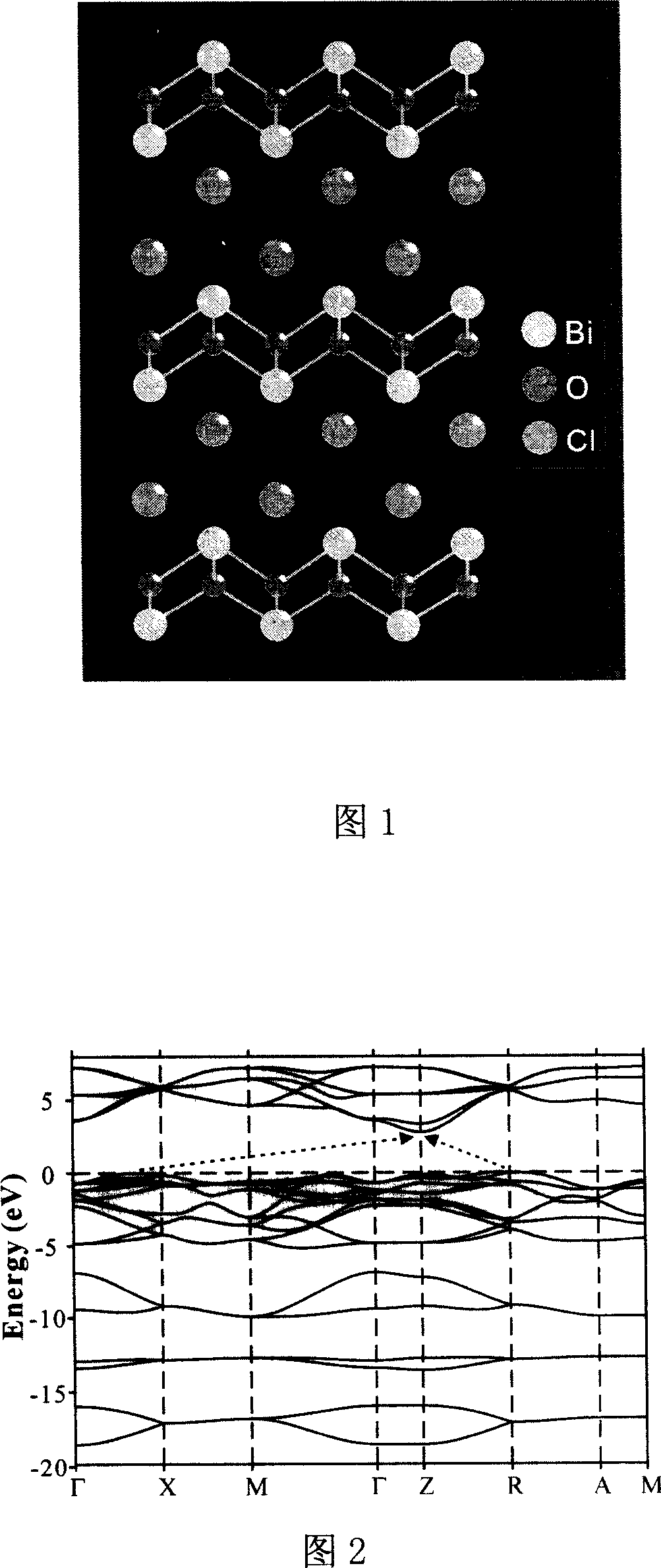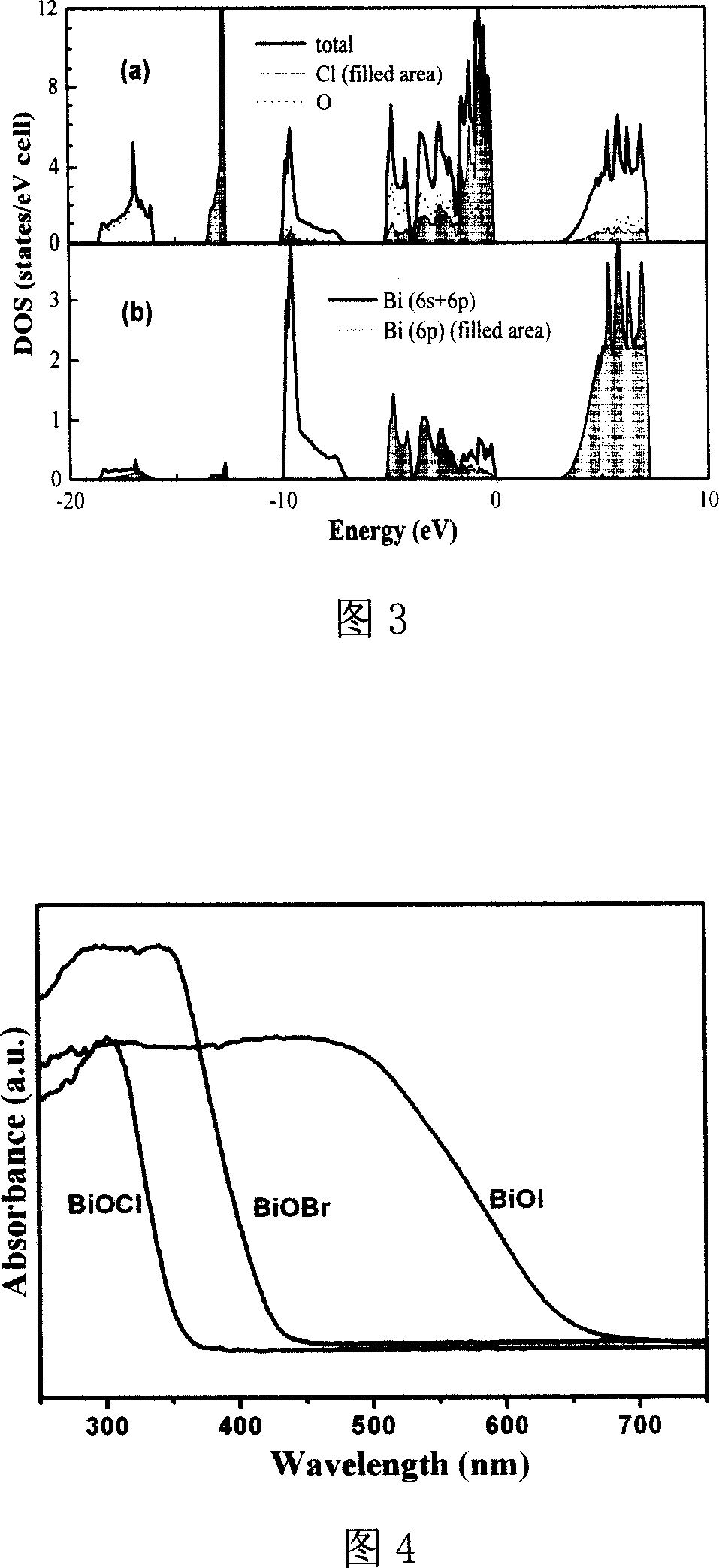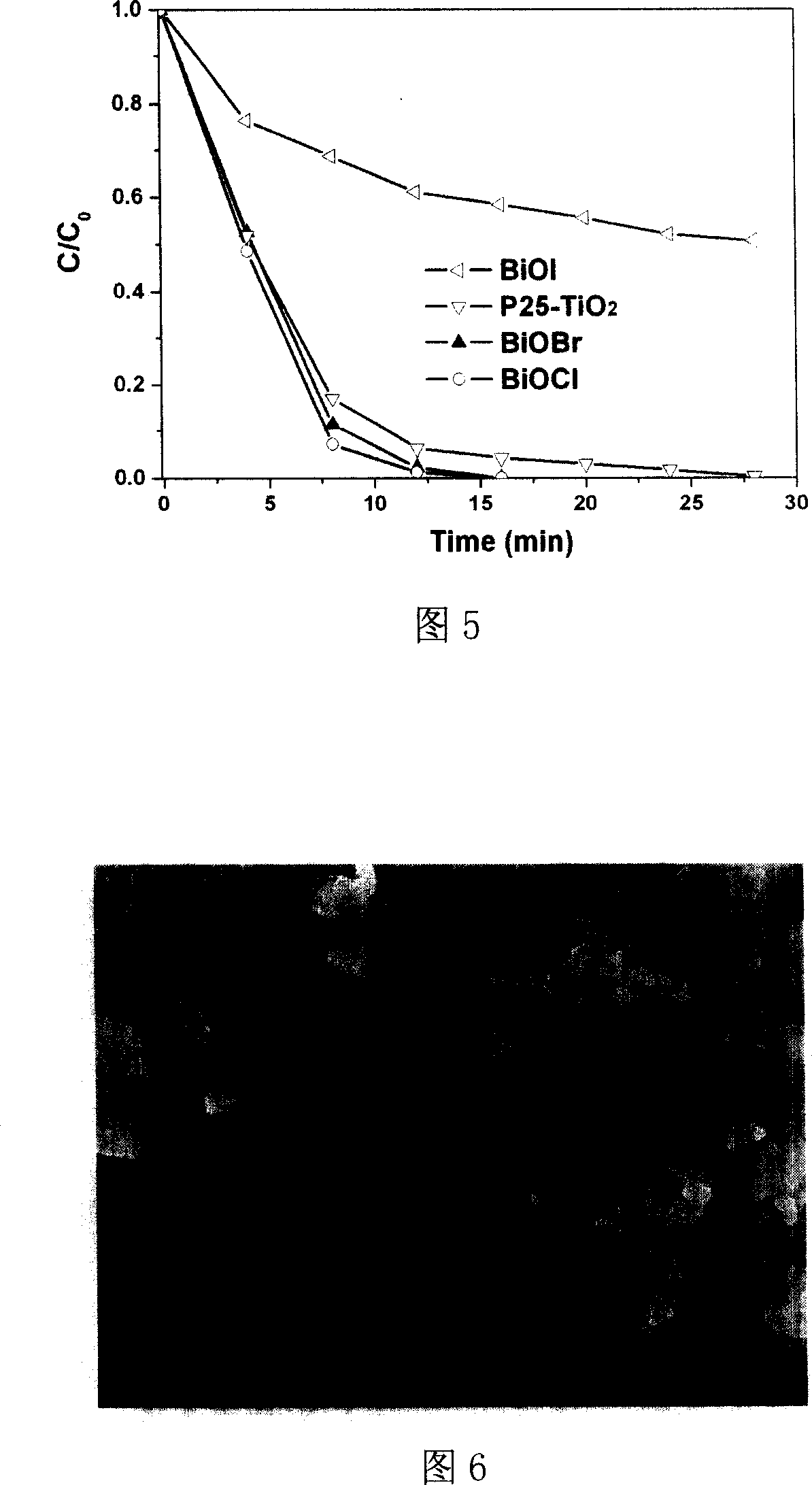Halogen-oxide photocatalytic material and preparing method
A photocatalytic material, oxyhalide technology, applied in chemical instruments and methods, physical/chemical process catalysts, chemical/physical processes, etc., can solve the problem of unsatisfactory photocatalytic effect, photochemical corrosion, poor powder photocatalytic activity question
- Summary
- Abstract
- Description
- Claims
- Application Information
AI Technical Summary
Problems solved by technology
Method used
Image
Examples
Embodiment 1
[0041] Bi 2 o 3 The powder is dissolved in the corresponding concentrated halogen acid, adjusted to pH = 3 with dilute ammonia water, and filtered several times until no X is detected - After ions (tested with silver nitrate solution), the precipitate is dried at 80°C to obtain the finished nano photocatalytic powder.
[0042] The specific process of the loaded BiOX (X=Cl, Br, I) photocatalytic material can be: take 2g of BiOX (X=Cl, Br, I) catalyst powder and put it into a beaker containing 100ml of deionized water, add 10ml of methanol Hole sacrificial agent and appropriate amount of AgNO 3 or H 2 PtCl 6 ·6H 2 O, under a 300W mercury lamp for 85-10 hours while vigorously stirring, after several times of filtration, washing, and drying, the photocatalytic material loaded with nano-Ag or Pt particles can be obtained.
[0043] The experiment of photocatalytic degradation of organic substance methyl orange shows that the UV photocatalytic performance of BiOX (X=Cl, Br) is ...
Embodiment 2
[0048] Bi of the stoichiometric ratio 2 o 3 and BiX 3 (X=Cl, Br, I) was placed in a quartz tube, vacuumized and packaged, and heated at 550° C. for 12 hours. After cooling, open the tube and grind to get the finished photocatalytic powder.
[0049] Photocatalytic degradation of dye methyl orange, photolysis of water to produce hydrogen, degradation of harmful substance formaldehyde and bactericidal test results are about 40% of those in Embodiment 1, which may be due to the smaller specific surface area of the sample prepared by the solid phase method.
Embodiment 3
[0051] Take 100ml of deionized water in a beaker, use the corresponding halogen acid to adjust the pH of the solution to less than 1, then heat the solution to about 70°C, while stirring continuously, slowly add 1mol of bismuth nitrate-halogen acid solution, and slowly add 15% NaOH solution to neutralize the HNO produced by hydrolysis 3 , maintain the pH value at around 2, and the whole process lasts for about 1 hour. During this period, the temperature was kept constant at about 75°C, continued to stir for 10 minutes, cooled, filtered, washed, and dried at 80°C to obtain the finished photocatalytic powder.
[0052] The performance test result is basically the same as that of Example 1.
PUM
| Property | Measurement | Unit |
|---|---|---|
| Particle size | aaaaa | aaaaa |
Abstract
Description
Claims
Application Information
 Login to View More
Login to View More - R&D
- Intellectual Property
- Life Sciences
- Materials
- Tech Scout
- Unparalleled Data Quality
- Higher Quality Content
- 60% Fewer Hallucinations
Browse by: Latest US Patents, China's latest patents, Technical Efficacy Thesaurus, Application Domain, Technology Topic, Popular Technical Reports.
© 2025 PatSnap. All rights reserved.Legal|Privacy policy|Modern Slavery Act Transparency Statement|Sitemap|About US| Contact US: help@patsnap.com



